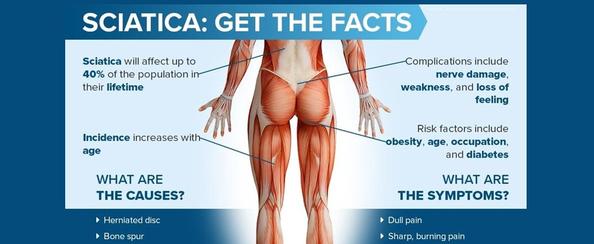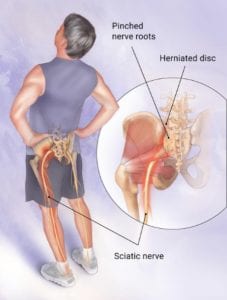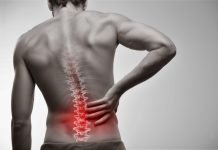Do Chiropractors Help With Sciatica Nerve Pain?
Chiropractors are experts in many fields. They offer relief for chronic pain, car accident injuries, and other ailments. Can this be true of sciatic nerve pain too? Can a chiropractor help with sciatic nerve pain?
Clinical medicine or medical specialties have their way of treating diseases and disorders in the musculoskeletal system, nervous system, and basically the whole human body. However, in some cases, chiropractic treatment techniques are quite enough to get you back at your feet.
Can chiropractors help with sciatica and relieve pain or help reduce the pain?
Many people who have had back surgery or those suffering from chronic back problems find that a visit to the chiropractor is helpful in relieving their symptoms and improving their quality of life.

How Does Sciatica Affect You?
The sciatic nerve is not a condition as it is actually what causes the pain. Since the sciatic nerve covers a large area of the body, it can become irritated a lot easier than other nerves.
The pain caused by sciatica can range from somewhat mild to very intense as it is caused by a compressed nerve in the lower spine.
The likelihood of being affected by sciatica is around 40% in a lifetime, and if you are one of those individuals, you understand how annoying and painful it can be.
There is a misconception that sciatica only occurs in the back. Sciatica, however, can affect any part of the body.
The sciatic nerve passes through the low back, the buttocks, and then the legs, ending just below the knee, and depending on where the irritation occurs. Pain may radiate from any of these areas.
Depending on where the irritation exists along the sciatic nerve, the pain may develop anywhere along the nerve and may be dulled with pain medications.
What Are the Causes of Sciatica?
An injured disc commonly aggravates sciatica due to the inflammation that generally occurs once it ruptures or bulges. It is common for pain to be localized to one side of the body when inflammation and swelling are present.
Sciatica pain is generally experienced as a shooting wave. As a result of this swelling, you may experience pain along your sciatic nerve that shoots in waves along one side of your body.
Aside from spinal stenosis and degenerative disc disease, other common causes of sciatic pain include spondylolisthesis (where one lower vertebra slips forward onto the one beneath it).
In pregnancy, there is an increased amount of physical stress on the body, resulting in women experiencing sciatica for the first time. Chiropractic treatment can help relieve this stress. Women’s sciatic nerve runs underneath the uterus, which can cause pain and discomfort as the growing baby places pressure on it.
A pregnant woman experiencing back pain may experience sciatica. Over two-thirds of pregnant women experience back pain while they are pregnant.
A larger fetus increases the pressure on the sciatic nerve, which promotes sciatica later in pregnancy.
Several factors can contribute to sciatica, such as being overweight, not exercising frequently, wearing high heels, or sleeping on a mattress that is too soft.
Sciatica may have many causes, but the common characteristic is always that it results in severe pain.
Sciatica Symptoms and Signs: How Does It Affect Me?
Having the pain radiate down the back (lumbar) of the leg, down the buttock, and down the back of the calf is enough to recognize the symptoms of sciatica. A tingling, burning sensation called paresthesia can accompany this pattern on one side of the body.
If it’s more severe, the pain may feel like a jolt or a mild, dull pain. There is a spectrum of pain associated with sciatica, so don’t dismiss it because it isn’t extreme. You may have sciatica if you feel pain radiating from your legs.
Nerve irritation and tingling or pins and needles sensations in the foot are sometimes felt with sciatica. Symptoms may include leg numbness, muscle weakness, discomfort when standing, difficulty breathing, and anxiety.
- Spinal stenosis (spinal canal narrowing in the lower spine)
- Piriformis syndrome (piriformis muscle spasms or tightness)
- Degenerative disc disease (impacting the vertebral discs)
- Spondylolisthesis (this is caused by one vertebra slipping forward over another one)
- Pregnancy (stresses the spine by adding pressure)
- Wear and tear on the lower spine (due to age, obesity, or poor alignment)
How Is Sciatica Treated Through Chiropractic Center Treatments?
A chiropractor’s primary treatment for back and neck pain is a procedure known as “back and neck cracking.”. The chiropractic adjustment is certainly one method chiropractors use to treat sciatica, but they use a variety of other strategies, as well:
Pain Relief Creams – to relieve pain
Ice/Cold Therapy – To reduce inflammation
Ultrasound – By generating gentle heat through sound waves, the pain is relieved while circulation is increased, and muscle spasms, stiffness, and pain are reduced.
TENS Unit – Muscle contraction machines apply an electrical current to reduce muscle spasms and reduce pain
Spinal Manipulations / Manual therapies – Chiropractic care is centered on restoring proper movement to the spine through manipulation and restoring alignment to the vertebrae that have become subluxated.
Physical Therapy or Exercising and Stretching – By establishing these, you’re ensuring the effectiveness of your treatment, even after the treatment is over.
Spinal Decompression Therapy – In addition to helping to reduce sciatica caused by spinal disc herniation, spinal decompression therapy can also give great results.
Is a doctor of chiropractic a good treatment option for folks suffering from sciatica and need sciatica pain relief? Here are detailed information about chiropractic techniques that a chiropractor for sciatica do to help lessen sciatica nerve pain based on how sciatica is caused:
Diagnosing Sciatica Correctly
Restricted spinal movement leads to pain and reduced function, a fact firmly established in chiropractic care. Upon examination by a chiropractor, your medical history is reviewed to determine the cause of your sciatic pain. Chiropractic treatment promotes the body’s ability to heal itself without drugs or surgery (non-invasive).
Chiropractor Massage Therapy
Sciatica pain can be relieved significantly with a chiropractic-type massage. Natural painkillers are released during deep muscle relaxation and the release of endorphins. Massages at spas may help to relax muscles and release tension, but chiropractic massages are more targeted at soothing and healing sciatica. Your chiropractor has extensive knowledge of the whole musculoskeletal system. In order to kick-start the healing process, they know when and where to apply pressure.
Cold and Heat Therapy
Chiropractors can use cold and heat therapy alternately to soothe sciatica pain quickly. Tight muscles can be loosened and the agony dulled by heat. It helps ease inflammation symptoms by slowing down the blood flow. It is the chiropractor’s role to identify which treatment is right for you and to determine whether to alternate between the two.
Ultrasound and Other Therapies
Sound waves emit gentle heat that penetrates deep into tissues, which is what ultrasound therapy does. As a result, it can help better circulation (which speeds up the healing process), reduce cramping, swelling, and muscle spasms. As an alternative method of treating sciatica pain, chiropractors may also use low-level laser therapy. By reducing swelling or edema, pain, and irritation, it achieves a faster healing process. Additionally, chiropractic treatments can take advantage of Transcutaneous Electrical Nerve Stimulation (TENS) units. The device is a battery-powered nerve stimulation device that helps relax muscle spasms, releases painkillers, and increases endorphins.
Chiropractic Adjustments (Spinal Manipulation)
Chiropractic manipulations or spinal adjustments can restore the disc to its original position and relieve pressure on the sciatic nerve caused by a herniated disc. During adjustments, spinal movement may be improved as well as misaligned discs can be corrected. It consists of rapid or slow thrusts alternating with minimal force and gentle pressure. In this way, the chiropractor can avoid pressing on the sciatic nerve by gently moving the vertebrae in the lower back. By doing so, the pain will reduce, and nerve signals will flow freely again. Chiropractic manipulations can also help to soothe muscle spasms, thus providing long-term relief.
Decompression of the Spinal Column
Spinal discs can become thinner and dry out naturally over time, which can cause nerve compression and pinched nerves. Spinal decompression is a technique chiropractors use to relieve the nerve compression associated with sciatica. Spine lengthening techniques may be employed as well as the enhancement of space between vertebrae.
Exercises for Chiropractic Care
Sciatica pain can be aggravated when you move in a particular way. A chiropractor, however, will recommend exercises for sciatica that not only avoid the aggravation of the nerve they will also help release the pressure caused by inflamed and tight muscles. You can perform home stretching programs as part of those exercises. Sciatica pain can also be relieved by yoga. Stretching the piriformis can help to release pressure and ease irritations around the nerve, as can the reclining pigeon pose.
Changes in Lifestyle
Chiropractors examine every aspect of your life. To protect the sciatic nerve, your chiropractor may recommend a different way for you to stand, sit, sleep, or lift. To keep the disc in place, follow this guide to strengthen the back muscles. It is critical to strengthen the back so that the sciatic nerve will be less likely to be compressed once again by slipped discs. The benefits of chiropractic care, therefore, extend to both short-term and long-term pain relief.
Sciatica patients who have leg pain don’t wait for it to worsen. Seek a primary care physician, a health care personnel, or the nearest chiropractor for them to correctly identify the trigger points and can give you proper alignment for your spinal cord and/or treat the underlying cause.
Here is list of some of the most common conditions treated with Graston Technique® therapy.
- Ankle Pain (Achilles Tendinosis/itis)
- Wrist Pain (Carpal Tunnel Syndrome)
- Neck Pain (Cervical Sprain/Strain)
- Fibromyalgia
- Hamstring Injuries
- Hip Pain / Leg Pain
- IT Band (Iliotibial Band)
- Tennis Elbow (Lateral Epicondylosis/itis)
- Back Pain (Lumbar Sprain/Strain)
- Golfer’s Elbow (Medial Epicondylosis/itis)
- Knee Pain (Patellofemoral Disorders)
- Heel Pain (Plantar Fasciitis)
- Shoulder Pain (Rotator Cuff Tendinosis/itis)
- Scar Tissue
- Lower Back Pain
- Upper Back Pain
- Sciatica and Leg Pain
- Trigger Finger
- Women’s Health (Post-Mastectomy and Caesarean Scarring)

Doctor Osvaldo Pepa, Neurosurgery Service Physician at Hospital San Martin, La Plata, Argentina. I graduated last November 16, 1984 with a Medical Degree at the Universidad Nacional de La Plata. The Medical Board of La Plata, District 1, licensed me as a Neurosurgeon in 1990. I hold a Provincial and National License and an active member of the Neurosurgery Society of La Plata, World Ozone Therapy Federation, and Inter American Society of Minimally Invasive Surgery.








